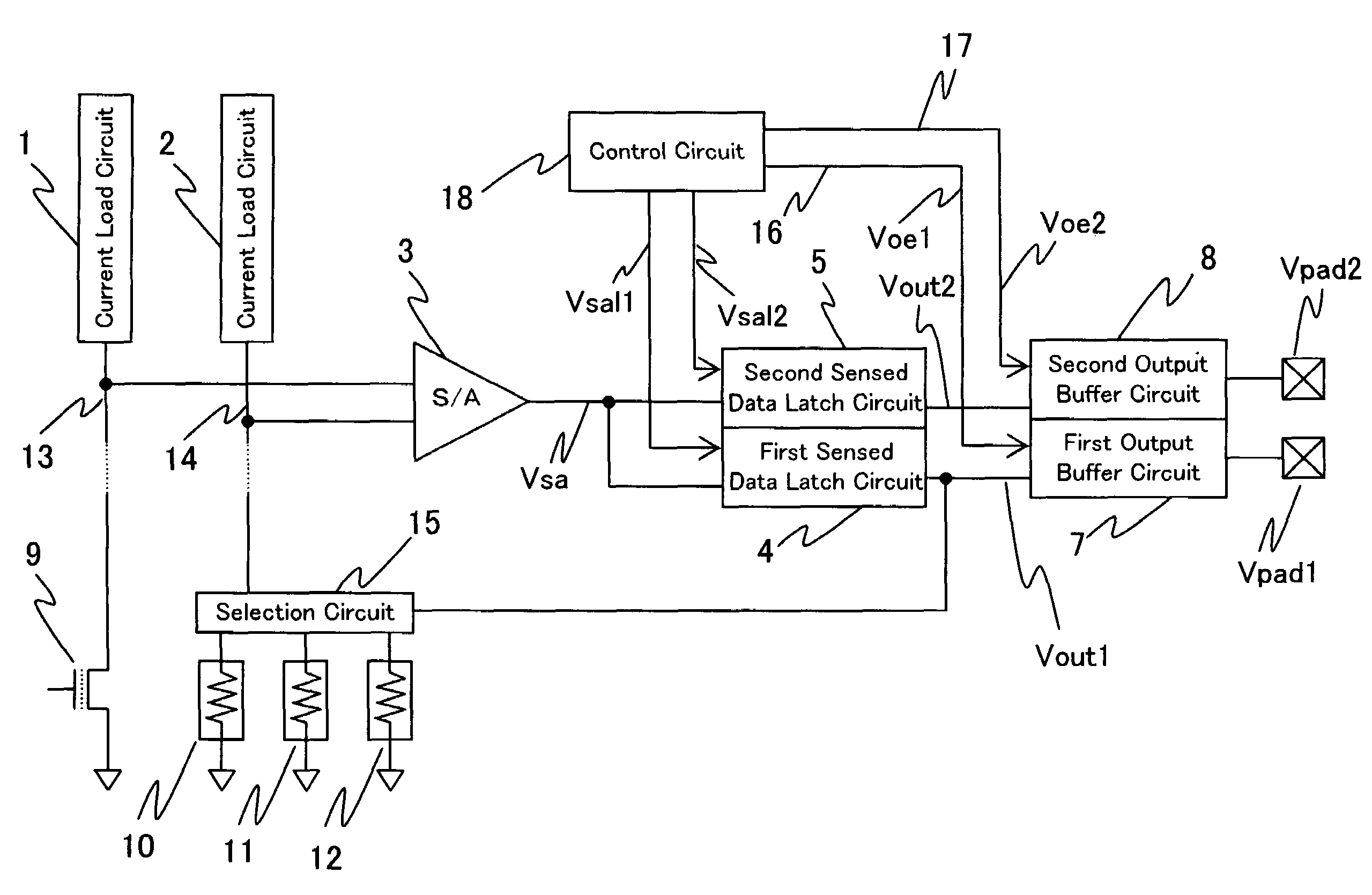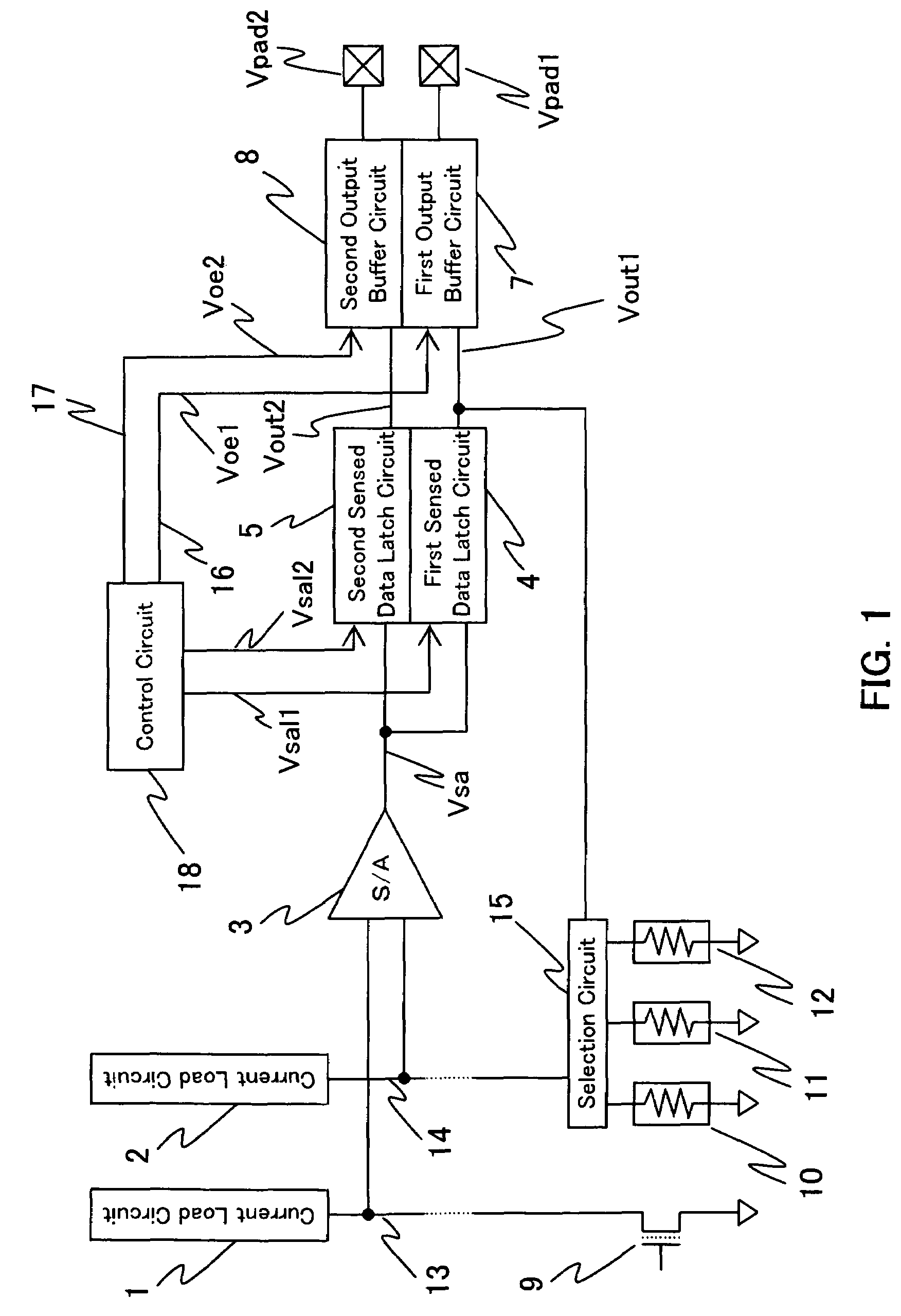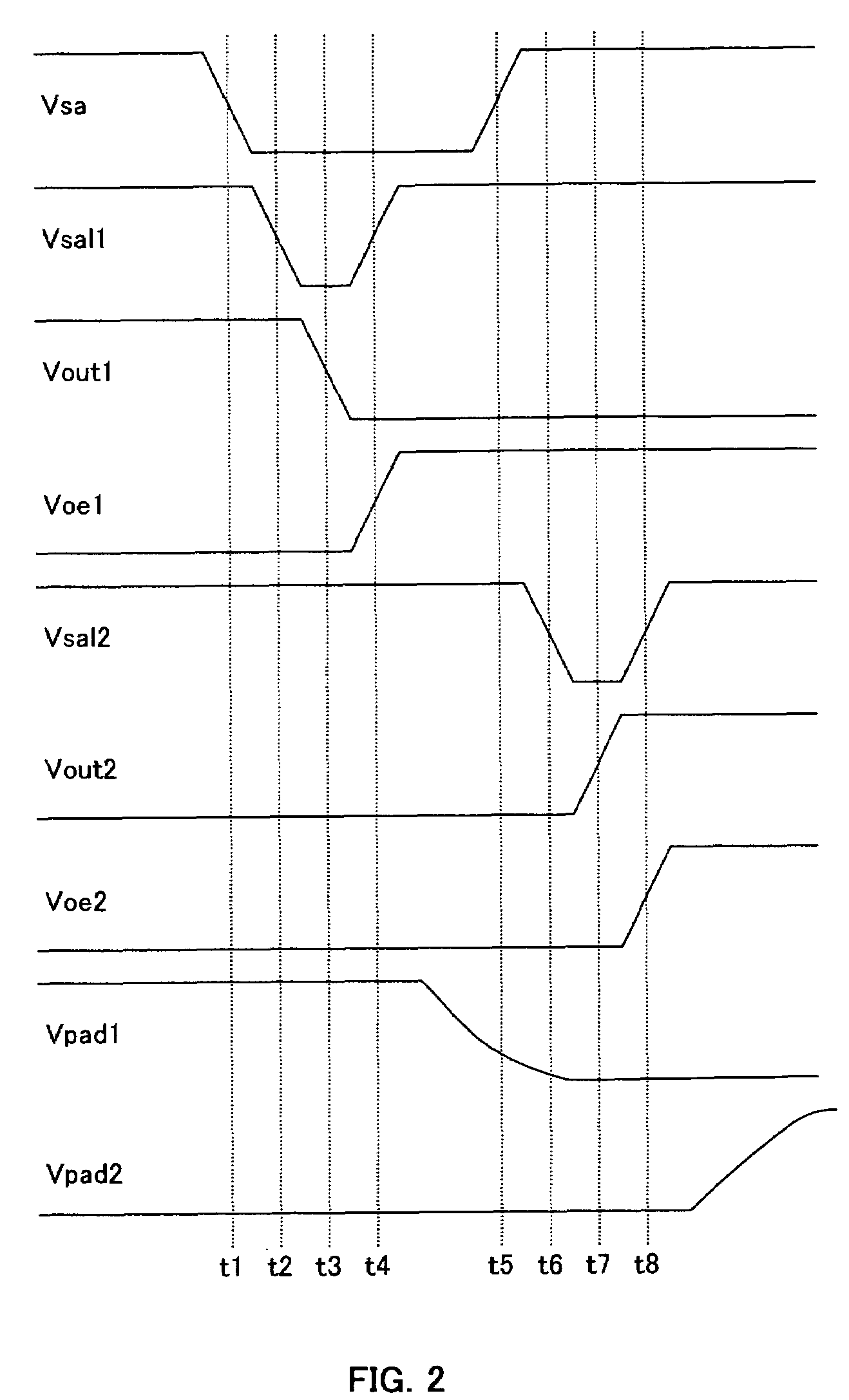Semiconductor memory device
a memory device and semiconductor technology, applied in the field of semiconductor memory devices, can solve the problems of reducing the number of output buffer circuits operating simultaneously, reducing the noise generated by the operation of the output buffer circuit, and so as to reduce the noise only without sacrificing the readout ra
- Summary
- Abstract
- Description
- Claims
- Application Information
AI Technical Summary
Benefits of technology
Problems solved by technology
Method used
Image
Examples
Embodiment Construction
[0047]Hereinafter, description will be given of an embodiment of the present invention with reference to the drawings.
[0048]FIG. 1 is a block diagram showing an embodiment of a semiconductor memory device according to the present invention (hereinafter, appropriately referred to as “inventive device”). Herein, components having the same constitutions as those of the conventional components are denoted by the same reference numerals. The constitutional difference between this embodiment shown in FIG. 1 and the conventional embodiment shown in FIG. 3 is as follows. That is, the inventive device has a control signal line 16 for controlling the operation timing of a first output buffer circuit 7 by a first sensed data output control signal Voe1 from a control circuit 18 and a control signal line 17 for controlling the operation timing of a second output buffer circuit 8 by a second sensed data output control signal Voe2 from a control circuit 18. With the control signal lines 16, 17 fro...
PUM
 Login to View More
Login to View More Abstract
Description
Claims
Application Information
 Login to View More
Login to View More - R&D
- Intellectual Property
- Life Sciences
- Materials
- Tech Scout
- Unparalleled Data Quality
- Higher Quality Content
- 60% Fewer Hallucinations
Browse by: Latest US Patents, China's latest patents, Technical Efficacy Thesaurus, Application Domain, Technology Topic, Popular Technical Reports.
© 2025 PatSnap. All rights reserved.Legal|Privacy policy|Modern Slavery Act Transparency Statement|Sitemap|About US| Contact US: help@patsnap.com



